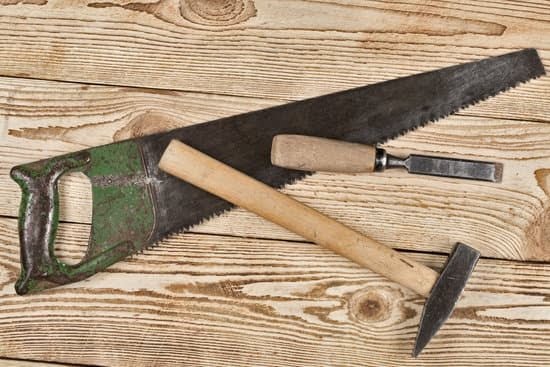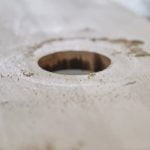Introduction
Cleaning woodwork before painting is an essential step to ensure your project turns out as perfect as possible. Without thorough cleaning and preparation, the quality of the finish may be diminished and the life of the paint job may be considerably reduced. Dust, dirt, residue, and other grime can affect how the paint adheres to the surface, leading to flaking and peeling after a period of time. Additionally, if not completely removed prior to painting, trapped dirt particles may lead to an uneven finish.
By properly preparing woodwork before painting, you can make sure that the paint will adhere evenly to your surfaces for long-lasting protection from the elements. Thoroughly cleaning before painting removes all dust, residue, and other oils that could keep the paint from adhering properly. Cleaning can also strip away old coats of paint or sealers so that you get a fresh base on which you apply new finishes or treatments. Furthermore, applying a good primer coat prior to finishing with top coats helps prolong the life of a painted surface far beyond what it would have been without it. Therefore taking an extra step in prepping your woodwork before painting is well worth it in terms of saved money and effort over time!
Choosing the Appropriate Cleaner Based on Surface Type
It is essential to choose the right cleaner for your woodwork before you begin painting. The appropriate cleaner depends on the type of surface you are dealing with and should be based on the manufacturer’s instructions. For additional information, it’s best to consult a professional or even consult with paint store personnel to determine what type of cleaner is right for your individual project.
Woodwork that requires painting may need more than just a simple wipe down with a cloth and water. Depending on the surface type, there are different kinds of cleaning solutions that may be necessary to prepare the wood properly and ensure a high-quality finish when painting. Cleaners often used include mineral spirits, sugar soap, trisodium phosphate (TSP), citrus-based cleaners and all-purpose degreasers. Each has properties designed for certain specific VOC levels which make them suitable for different types of surfaces, especially when special considerations such as removing oils, dirt or old paint must take place before applying new coats. Additionally, some solvents could potentially damage untreated wood such as pine unless proper precautions are taken first. As always safety should be considered before use. Certain cleaners require protective gear like gloves and goggles while others provide warnings about ventilation requirements during use or if they contain hazardous materials like ammonia or bleach they can have eye and lung irritating fumes, which may linger after application.
Preparing Your Wood for Cleansing
Before you begin cleaning woodwork before painting, you need to ensure that the wood is properly prepared. Before starting, inspect the wood for any damage such as cracks, loose pieces of wood, or water stains. If there are any issues, it is important to address this first as these can affect your paint job in the future. If necessary, use a sander or sandpaper to smooth over any uneven edges and remove any rust residue. Also clean off any dust or debris that could make it harder to get an even layer of paint on the surface. Once your wood is properly prepped, then you can begin cleaning with a high-quality cleaner suitable for your particular type of wood. Various types of cleaners will have different instructions on how much pressure to use and other specifics related to the product so refer to these instructions before continuing with your project.
Safety Precautions when Cleaning Woodwork
When cleaning woodwork before painting, it is important to take safety precautions. First, wear safety goggles and a protective mask to guard against splinters and particles. Make sure there are no open flames or open electrical outlets near the surface being cleaned. Ensure that all tools are in good working condition and properly maintained. Put on a guarded glove when handling a wire brush or other abrasive tool. Make sure the area is well-ventilated and free of dust particles, which can be harmful with inhaled during the work process. Additionally, be aware of any hazards nearby such as sharp objects, solvents, or any other dangerous items that could result in an accident if not handled properly. Finally, cover up any furniture and flooring around the woodwork to prevent accidental spills or scratches from occurring.
Types of Cleaners and How to Use Them
Cleaning woodwork before painting is an essential step that prepares the wood for a smooth, even coat of paint. Before beginning to paint, we must first remove any dirt or buildup from the wood surface. To do this, there are several types of cleaners that can be used to give your woodwork a thorough cleaning.
Oil-based detergents like mineral spirits can be rubbed onto wooden surfaces and wiped clean with soft cloths or sponges. This type of cleaner will help to dissolve oil buildup on painted surfaces and gets rid of dust buildup on unfinished wooden furniture.
For heavier cleaning needs, such as removing grease or wax buildups, a mixture of warm water and dish soap can be applied to the area with a heavy-duty cloth or stiff brush. Scrubbing in circular motions helps break down any tough substances and will leave the surface clean and ready for painting.
Once you’re finished washing the wood surface, it’s important to perform a final rinse with clean water and then dry off the area thoroughly before moving forward with painting your project. This last step ensures that any tiny bits of dirt stuck in crevices are removed and will ensure an even coat of paint when finishing the project.
Removing Stains from Woodwork
When removing stains from woodwork before painting, make sure to use a cleaner that is specifically engineered for cleaning wood. Start by making a solution of the cleaner with warm water, and then soak a rag in it. Using circular motions, rub the rag over the areas you are trying to clean. If necessary, you can use steel wool to remove difficult stains. Be careful not to scrub too hard or with too much pressure as this could damage the wood’s surface. Once done scrubbing, rinse the rag occasionally and reapply more of the solution as needed. After all stains have been removed, allow your woodwork to air dry completely before moving on to applying sealant or primer if desired. It is important to take special care while handling stained wood since other cleaning chemicals (like detergents) can actually cause additional damage and discoloration.
Sanding Woodwork Before Painting
Sanding woodwork before painting is an essential step in ensuring a successful finish. Sanding will help remove any existing paint, dirt, and debris from the surface so that the new layer of paint will adhere uniformly. Sanding should be done with a medium-grit sandpaper, such as 120-or 150-grit, to ensure even coverage. It is important to use light strokes when sanding so that you don’t damage the wood or leave unwanted scratches on the surface. Once you’ve finished sanding, it is important to use a vacuum to remove any dust particles left behind. After sanding woodwork and cleaning off the dust particles make sure to also wipe down the surface using damp cloth that’s been lightly dampened with cool water before applying primer and paint. Doing this will help to eliminate any remaining dirt and grime which can cause paint adhesion problems.
Prepping and Priming Surfaces
Prepping and priming woodwork surfaces before painting is an essential part of ensuring that the final result looks great. Taking a few moments to prepare the surface will help to ensure the overall finish has a uniformed look, is stain-resistant, and has a long lasting finish.
The most important step in prepping woodwork before painting is to give it a thorough cleaning. Any dirt, stains, or residue should be removed before beginning with any priming as these items can cause paint to not adhere properly or show through the finished product. This can be done by using mild soapy water or specialty cleaners designed for prepping wood surfaces for painting. Rough up any very smooth areas of the woodwork with sandpaper in order to ensure the paint or primer will adhere properly. Once the excess dust from sanding is wiped away, it’s time to begin priming. Primer provides a barrier between the wood and paint that helps to even out color, reduce wood grain texture showing through and allows paint colors to look more consistent overall. It also helps provide additional protection against moisture which can damage painted surfaces over time.
Benefits of Cleaning Woodwork Before Painting
Cleaning woodwork before painting is an important step when it comes to ensuring a lasting, beautiful finish. Doing so will help you achieve a professional-looking outcome that’s easy to maintain over time. It’s also a crucial part of the prepping process that allows the paint to adhere better and last longer. Cleaning woodwork should be done with all traditional and contemporary projects, but there are additional benefits as well.
First, cleaning removes existing stains and grime which can otherwise interfere with the look and texture of paint after drying. Next, it takes away any dirt and dust that may settle into the pores of the wood throughout its lifecycle, allowing for a more thorough cleanse than sanding alone could provide. Lastly, it allows you to identify any potential repairs or minor imperfections that may need addressing before starting the painting process so you can plan accordingly. All these benefits work together in helping you get your project ready for any kind of color scheme or design treatments you have in mind!
Conclusion
Before you consider painting woodwork, it’s absolutely essential to clean the surface thoroughly. It may seem like a tedious task but taking the time to clean your woodwork is an important step for achieving a professional finish when painting. Not only does this remove built-up dust and dirt from the surface of your woodwork, but it also helps to ensure any paint applied adheres properly and evenly.
When cleaning woodwork prior to painting, it’s important to use a mild detergent or soap and warm water. Start by dampening a rag with warm soapy water, then gently wipe down all surfaces of the woodwork to be painted. You can also use a soft brush or sponge for any hard-to-reach areas. Afterward, make sure you rinse off all surfaces with clean water and leave them to dry completely before applying new paint.
By following these simple steps when cleaning woodwork before painting, you are assured of achieving an attractive finish that will last for years. It is only through attentive preparation that you can achieve the desired outcome: smooth surfaces adorned with beautiful coats of paint that highlight its natural characteristics while protecting it from wear and tear. In conclusion, proper cleaning of your woodwork is essential before applying new layers of paint; this helps guarantee that the end result looks neat and professional!

Hi everyone! I’m a woodworker and blogger, and this is my woodworking blog. In my blog, I share tips and tricks for woodworkers of all skill levels, as well as project ideas that you can try yourself.





